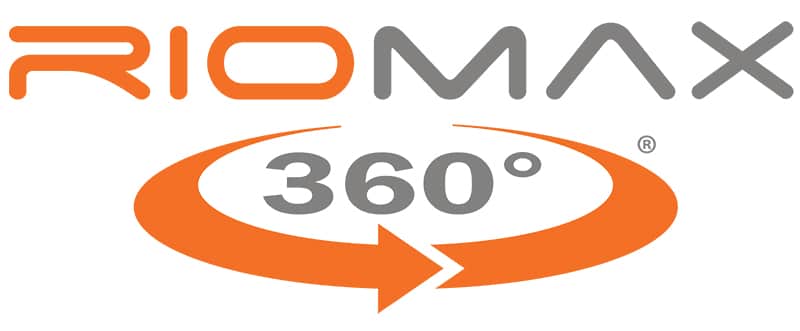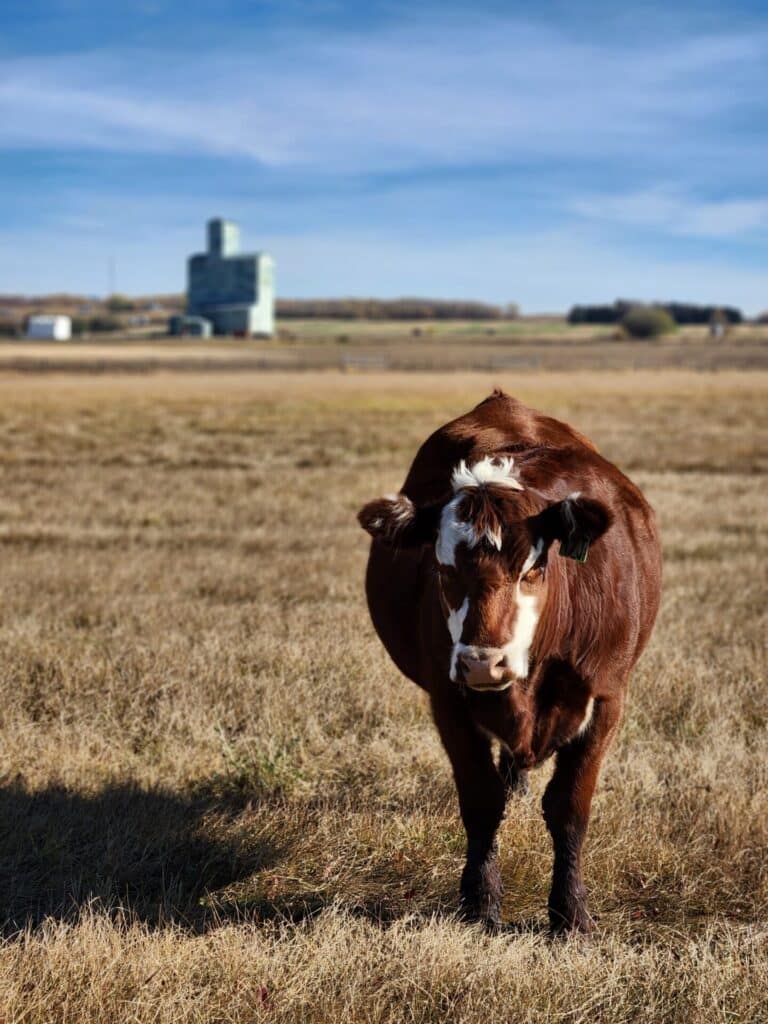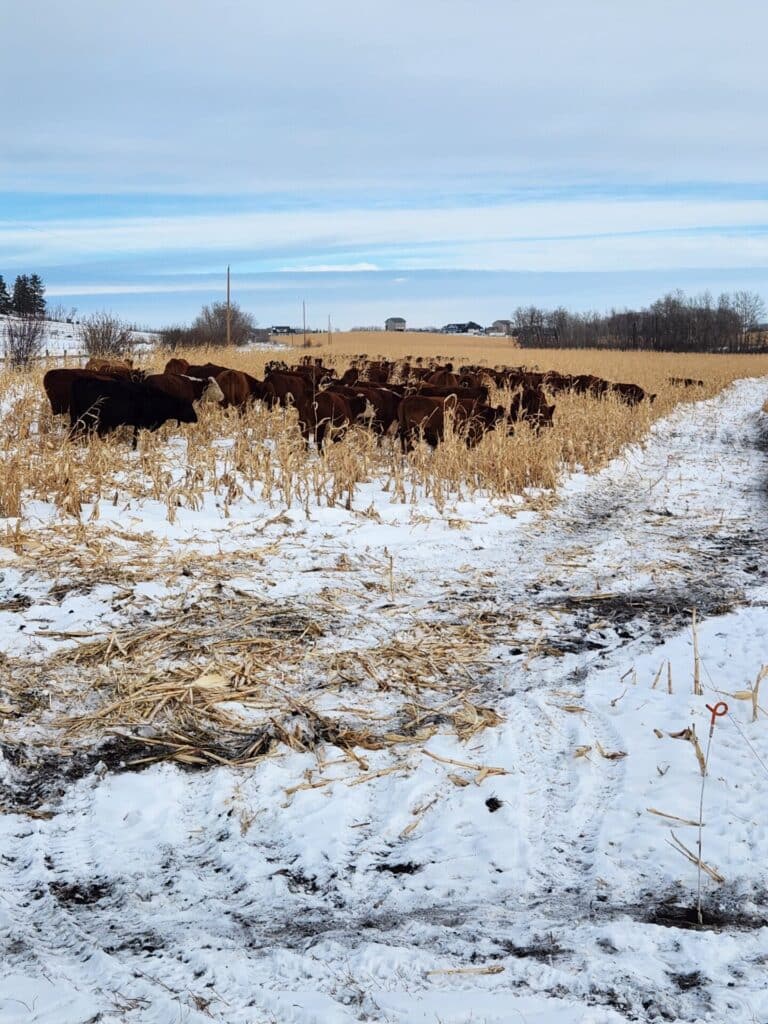Last updated on September 8th, 2023 at 02:44 pm
management that pays the bills
Jared Hunter started ranching with a herd that calved year around. With Riomax and tight management, that changed.
MEET Jared Hunter
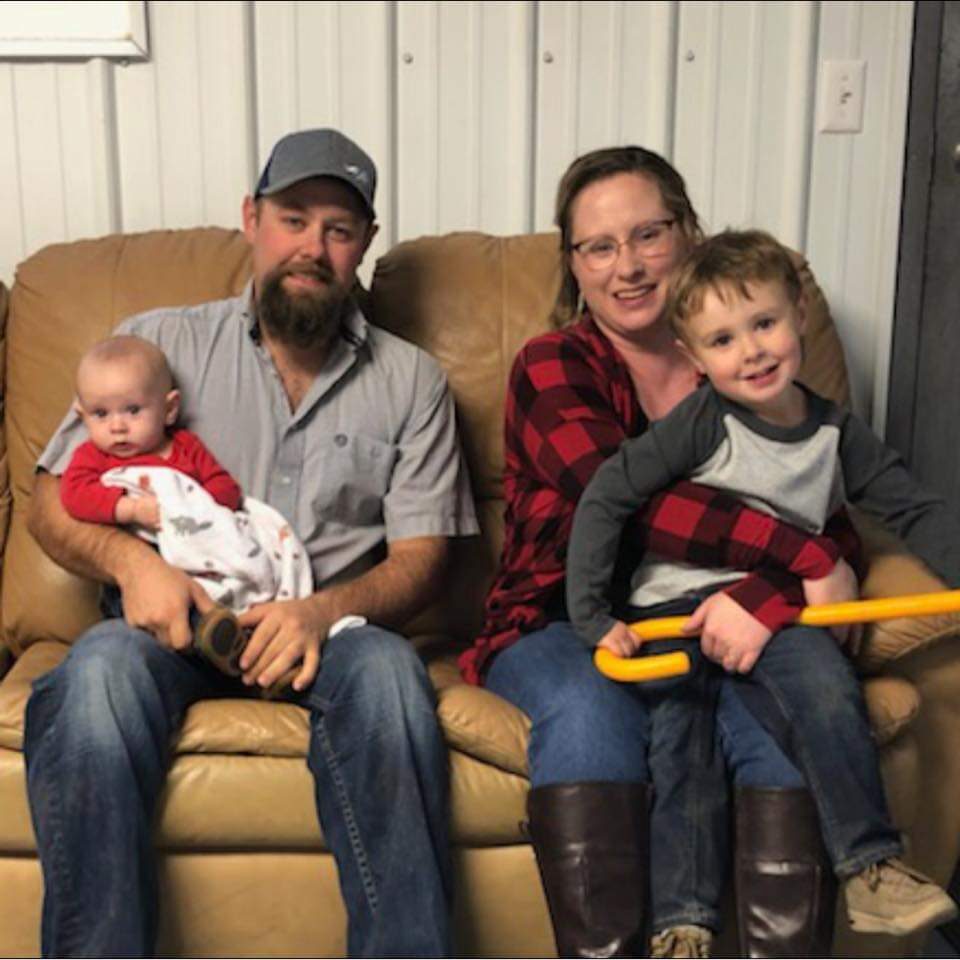
Innisfail, AB
For Jared Hunter, time is of the essence. While that’s by no means a new concept, for Jared it is simply a way of life.
Hunter always knew his future was to be a rancher. Growing up on a registered Red Angus operation in Alberta, Canada, gave him the background, knowledge, and confidence to go out on his own when the opportunity came along to buy his father-in-law’s commercial cattle operation near Innisfail.
A One-Man Operation
“We’re up to about 150 cows now,” he says. “Most of them are Red Angus, Hereford, and Simmental cross cattle.” However, the herd shows plenty of color, with Speckled Park and a bit of Charolais in the mix as well.
“I try to be as low maintenance as possible,” he says, which makes sense when he explains his operation. For starters, he and his wife have two sons, five and two. And his wife works off the farm. That’s enough to keep any two people plenty busy.
Then there’s his grazing operation. “We have about 10 different pastures that we manage with their landlords.” Those pastures range from around 40 acres to 160 acres. “There’s a lot to do with those and various distances involved, too.” One pasture is three miles away and another is an hour-plus drive.
Being spread out requires a lot of communication with the landlords to stay up to date with pasture conditions and cattle health. He’s fortunate to have a great working relationship with the owners of several of his rented pastures. “They do the rotational grazing. They’re older, retired folks that had been in the cattle business before my time and they still have the love for it.” He manages the grazing on the remaining pastures.
“There are time constraints with just about everything that happens,” he says. “I don’t know if the right word is a strangle to keep cattle in line and manage everything day to day. But I seem to manage, so I am kind of a one-man operation in that sense. Time is of the essence with a lot of the stuff I do from day to day.”
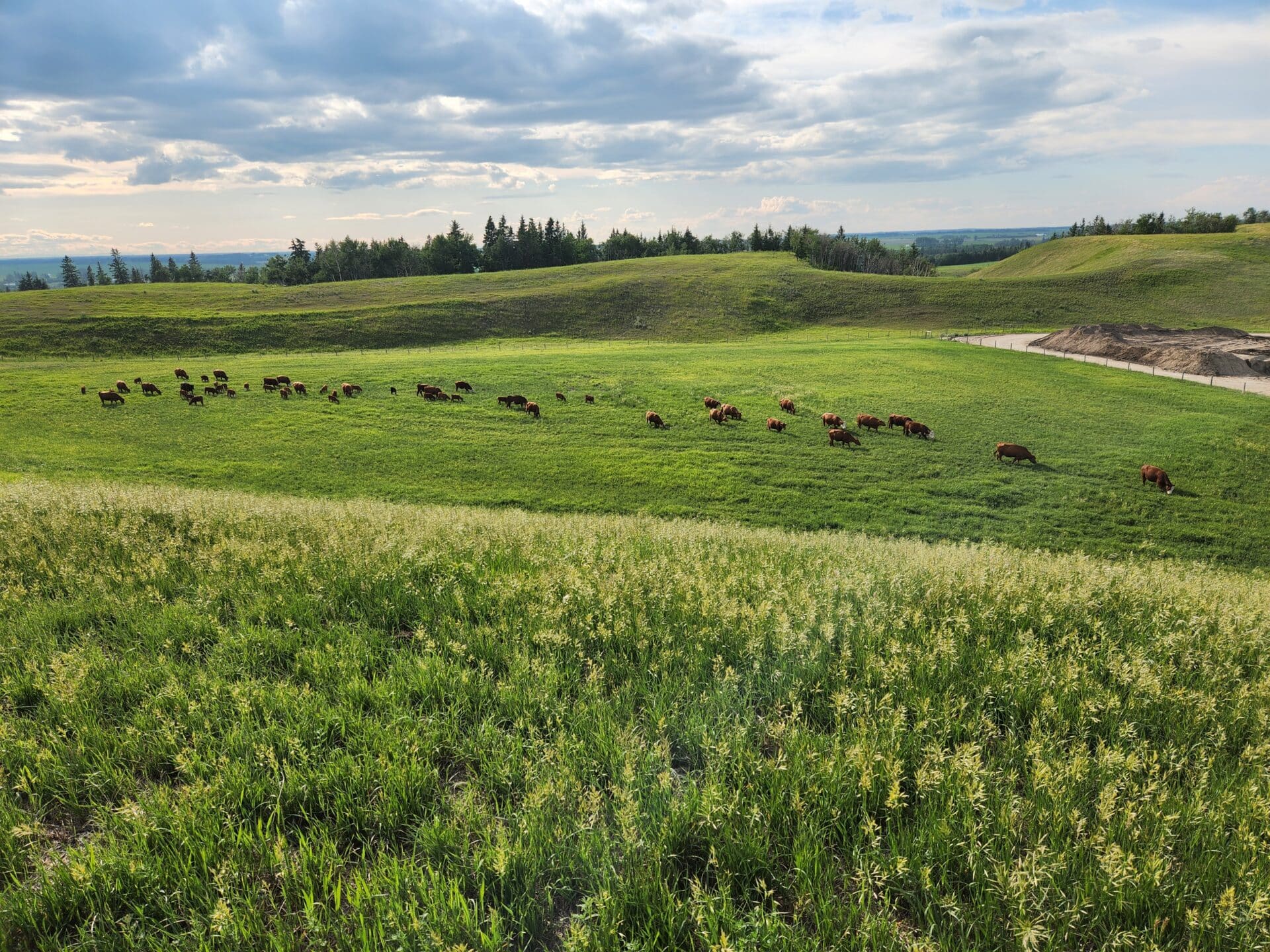
That’s where timing and efficiency come into play. A registered operation wants an early calving season so the bulls and heifers it sells are as old and as big as possible. However, the weather in central Alberta can be iffy in January and February, so Hunter calves his commercial cows in a 60-day calving season that begins the first week in March.

He’ll turn the bulls out when the pairs go to summer pasture the first week in June and will pull the bulls at the end of July. Given his background in Red Angus, he’s narrowing the genetics in his cow herd over time with a bull battery comprised of mostly red bulls, with one black bull as well.
Come fall, he’ll wean and sort the calves. The steers head to the sale barn in Innisfail in October and November. “Most of the heifers will stay until the New Year and we sort off the top half.” Those will be his replacement heifers, and he’s been known to pluck a few of the better ones from the bottom half as well.
“We do a run-through of quality and genetics and that kind of thing on paper,” he says, which gives him an idea of which heifers to focus on. Then the eye of the master takes over and he does a visual appraisal. And it’s not just one sort. He’ll eyeball the replacement heifers as they’re developed and continue to hone the sort as time goes on.
In addition to the cattle, Hunter grows most of his winter feed, which is primarily small grain silage along with 160 acres of alfalfa-grass hay. He puts up the feed himself and normally grows enough to get him through the winter.
A Tub That Covers All the Bases
Being a one-man outfit with spread-out pastures and a young family, Hunter is always looking for ways to be more efficient. That’s where Riomax® entered the picture.
“I was looking for a tub that covers all the bases,” he remembers. “I tried other tubs versus the Riomax® and I think the performance of the Riomax® is what sets them apart.”
While that performance does, indeed, cover all the bases, Hunter’s main focus when he first brought the orange tubs onto the ranch in 2019 was his calving window. In short, he didn’t have one.
When he took over the ranch, the bulls were always out and the cows calved year around. He pulled the bulls and, with careful management, began tightening his calving season. With Riomax, the cows’ body condition improved. As a result, they began cycling earlier.
“We were getting better breed-back,” he says. “There were some cows that moved up 60 to 75 days in their calving period. And they were older cows, 10-plus years, and that really, really made a big difference in them.”
Now that he’s got his cows on a defined, 60-day calving season, breed-back is crucial. With the cows and the bulls on the tubs, however, his conception rate is consistently high. Depending on the year and how much precipitation, the conception rate is typically in the low 90 percent range when he preg checks in mid-November.
Quality Nutrition Pays
However, as those who have added Riomax® to their nutritional and management programs know, the benefits do, indeed, cover all the bases. For Hunter, he sees it primarily in calf health. “I’m definitely seeing some healthier calves in the springtime,” he says. In fact, prior to adding Riomax, he recalls treating four to five calves a day during a wet spring and summer in 2018. Now, with Riomax, he averages two to three a week.
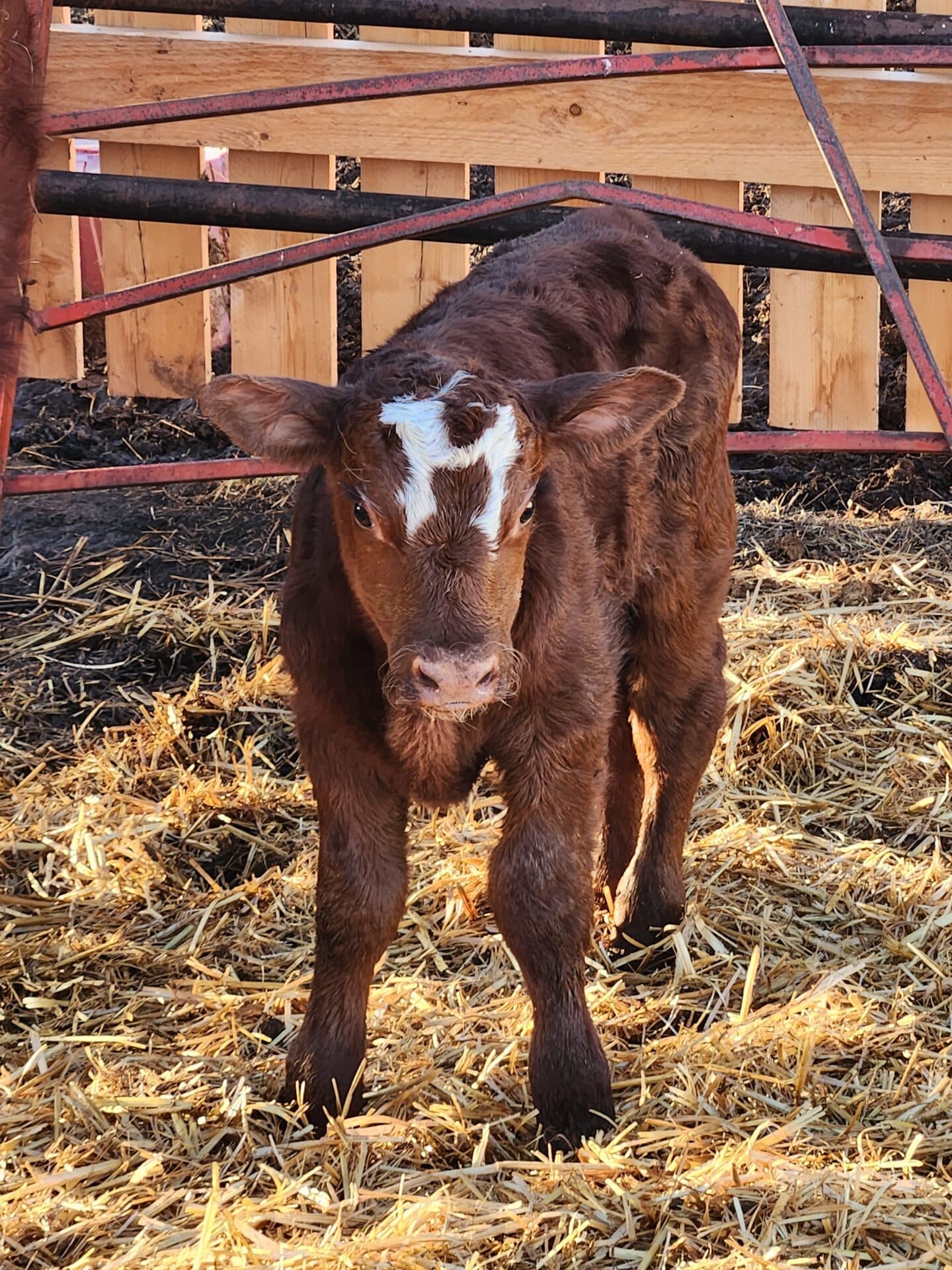
“That’s the biggest thing. We have tubs that pay for themselves versus having sick calves in the springtime. It’s really paid off, I think, for me.”
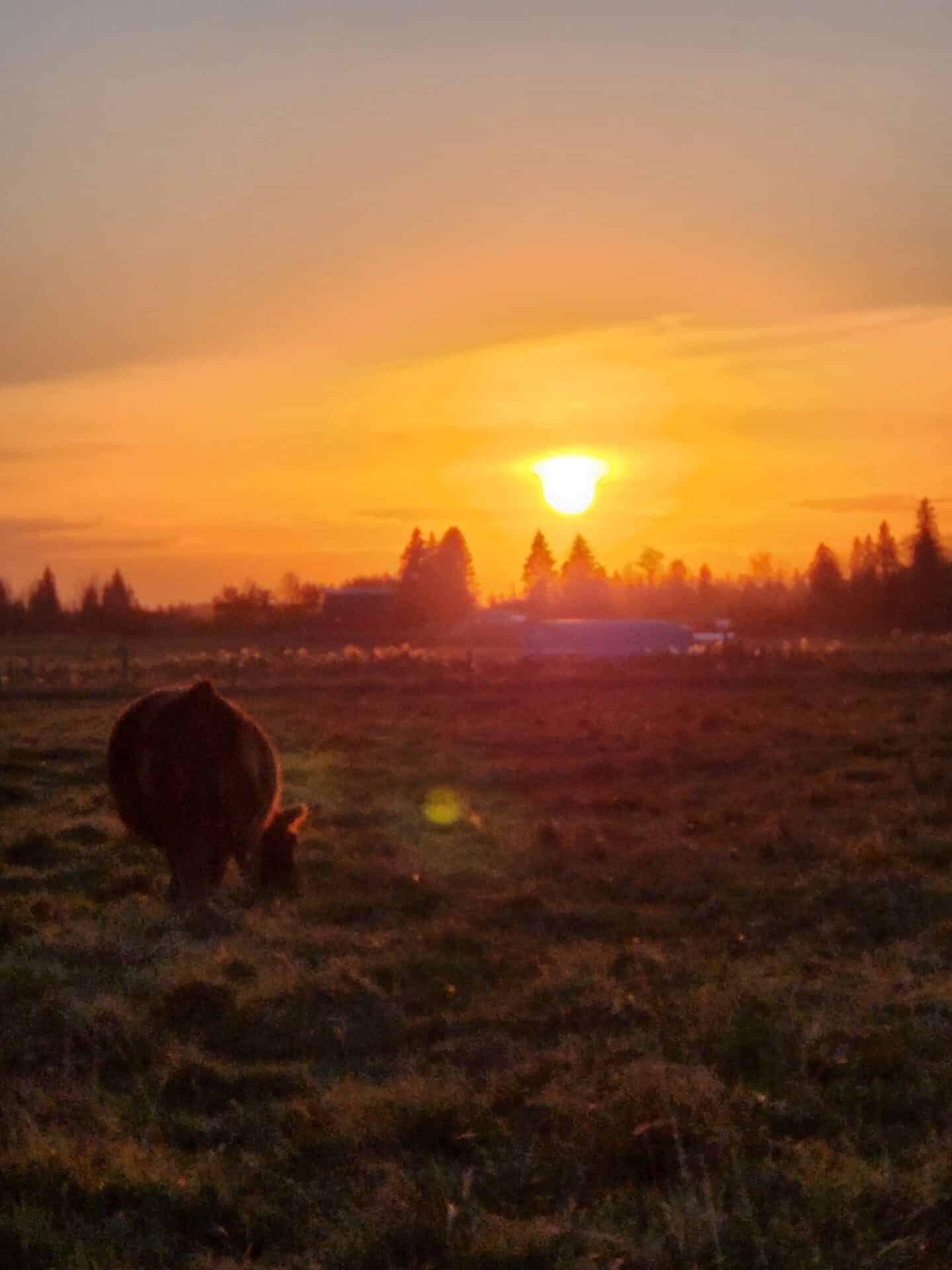
Advice to the Next Generation...
Even though he grew up ranching, Hunter realizes that every operation is different and that you should never stop learning. “This industry is so keen on helping the next generation,” he says. “I don’t think you’d find that in other industries, of having the folks who have been in the industry wanting to help the next generation take over.”
That’s where he feels doubly blessed. His parents are still raising registered Red Angus and his wife’s parents are still farming. “Both of them are huge assets whether it be bouncing ideas, helping with our cattle or watching grandchildren. It’s a major help to our operation and we wouldn't be doing this today if they weren’t there.”
His advice to young people looking to get into ranching is to take advantage of mentors and learn all you can. “I think that’s a major helping point to help get people started.”
Then, do things right. “What ranchers do is produce beef. What being a good rancher means to me is being proud of that product that you raise and sell,” he says.
“Having a reputation of quality is the biggest thing to being a successful rancher, in my eyes. Just about anybody can raise cattle and bring them to town and have some beef to put on the table. But having a reputation and a quality product behind it, that’s a big sticking point with me.”
Looking down the road, Jared and his family expect to be in the cattle business for many years to come. And very likely, the Riomax® orange tubs will play a part in his success. “It’s still a work in progress and we continue to ‘shave off the edges’ year after year.”


